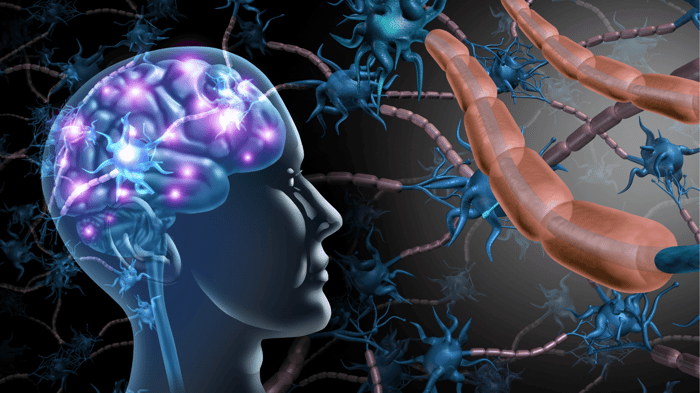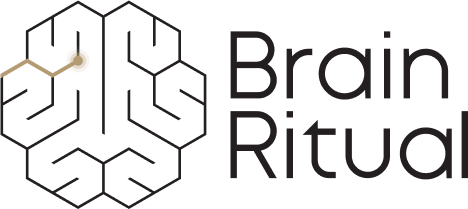At a glance –
|
Table of Contents
- At a glance –
- What Are Magnesium and Riboflavin?
- How Do They Help with Migraines?
- What Does the Research Say?
- Magnesium and Riboflavin: Benefits, Side Effects, and Smarter Supplementing
- The Science Behind It
- Is This Approach Right for You? When It Might Make Sense
- Final Thoughts on Magnesium, Riboflavin, and Migraine Relief
You’ve explored every option you can think of — tried the meds, tracked your triggers, even given up your morning coffee — but the migraines keep coming. And what’s worse, the side effects can feel almost as bad as the headaches themselves. It’s no wonder people are turning to natural solutions in search of gentler relief.
Maybe you’ve already heard that magnesium and riboflavin can help with migraines, as they often come up in conversations about natural relief. But it’s not always clear how they work, or whether they’re actually worth trying.
Let’s take a closer look at what the research says, how these nutrients might help, and whether they could be part of a more natural way to manage your migraines.
What Are Magnesium and Riboflavin?
The use of magnesium and riboflavin for migraines has gained attention in recent years — and for good reason. These two essential nutrients are required by the body to function properly, and play key roles in keeping the brain working as it should.
Magnesium is involved in hundreds of processes throughout the body. It supports healthy nerve function, helps muscles relax, and is involved in regulating blood flow — all of which are relevant when it comes to migraine prevention.
In the brain, magnesium helps calm overactive nerve signaling, a process that’s been linked to the onset of migraine attacks. Low magnesium levels are surprisingly common and may make the brain more sensitive to migraine triggers.

Riboflavin, also known as vitamin B2, is part of the B-vitamin family. It plays a key role in turning food into usable energy.
It’s especially important for the mitochondria — the tiny energy-producing structures inside your cells. Research suggests that people who experience migraines may have less efficient mitochondrial function in the brain. Riboflavin appears to support better cellular energy output in brain cells.
Together, magnesium and riboflavin provide two different but complementary ways to support brain health, and in turn benefit patients with migraine.
How Do They Help with Migraines?
Because magnesium and riboflavin affect different processes in the brain, they’re often seen as a helpful combination for migraine.

Magnesium is believed to help calm the nervous system, which may reduce cortical spreading depression — a wave of intense brain activity thought to trigger certain types of migraines, especially those with aura (flashing lights, blind spots, or tingling).
It also supports healthy blood vessels and helps regulate the release of neurotransmitters — chemical messengers involved in how the brain responds to stimuli. Together, these effects may help make migraines less likely to occur in the first place.
Magnesium also helps activate enzymes that support energy production in cells. Maintaining steady brain energy levels may play a role in how easily a migraine is triggered.
Riboflavin plays a key role in energy production within brain cells. Research suggests that people with migraines may have less efficient energy metabolism in the brain. By supporting the energy production process, riboflavin may help reduce the brain’s susceptibility to migraine.
Riboflavin is also a powerful antioxidant, which may help protect brain cells from oxidative stress. This type of cellular stress is thought to play a role in migraine, so reducing it may further support the brain's resilience.
When taken regularly and in the right amounts, both nutrients have shown powerful effects on migraine in the long run. They aren’t a quick fix, but they can form part of a longer-term strategy — especially for those seeking a gentler approach to treatment or looking to avoid the side effects often associated with migraine medications.
While results vary from person to person, magnesium and riboflavin are considered a low-risk option that’s well worth exploring — especially if migraines have started getting in the way of your daily life.
What Does the Research Say?
Magnesium and riboflavin have both been studied for migraine prevention, and the results so far are very encouraging.
Riboflavin has shown great promise in several clinical trials, particularly when used at higher doses.
Studies suggest that taking 400 mg of riboflavin daily may be beneficial in people prone to migraines[1]. These effects may take a few weeks to build, but the findings indicate that riboflavin could be a helpful long-term strategy for migraine prevention.
Magnesium has also been linked to fewer migraine attacks, particularly in people who aren’t getting enough through their diet — something that’s more common than many realize.
Studies suggest that magnesium supplementation may help[2, 3] support individuals who experience frequent migraines.
Magnesium citrate and magnesium glycinate are often preferred as supplement forms, as they tend to be better absorbed by the body. Another option is magnesium beta-hydroxybutyrate (Mg-BHB), the form used in Brain Ritual®. In addition to delivering magnesium, Mg-BHB provides ketone bodies, which are an efficient energy source that may support brain metabolism. In clinical studies, effective doses for migraine prevention typically range from 300 to 600 mg per day[2].
Both nutrients are recognized in official migraine prevention guidelines from several medical organizations, including the American Headache Society (AHS) and the UK’s National Institute for Health and Care Excellence (NICE). This means they’re not only supported by emerging research, but also recommended in clinical settings as part of a broader approach to migraine management.
While neither nutrient is a guaranteed solution for migraines, research suggests they can make a meaningful difference for many people — especially when used consistently and at the right levels.

Magnesium and Riboflavin: Benefits, Side Effects, and Smarter Supplementing
Magnesium and riboflavin appear to complement each other well when it comes to migraine support, targeting different systems in the brain and body. They’re often taken together, sometimes alongside nutrients like zinc, to support a more complete approach to prevention.
As with any supplement, more isn’t always better. High doses of magnesium can cause digestive upset (especially diarrhea), while riboflavin may turn your urine bright yellow — although this looks unusual, it’s completely harmless. As ever, it’s best to check with a healthcare provider before starting a new routine, particularly if you’re on medication or pregnant.
If you’re considering trying both nutrients, a combined formula may offer a simpler, more consistent way to get the right amounts.
A Smarter Way to Supplement?
Rather than piecing together separate doses, you may prefer a single, science-led formula. Brain Ritual was created by an Oxford-trained neuroscientist and is intended for the dietary management of migraine under medical supervision. It includes magnesium and riboflavin in clinically studied forms and amounts, along with other evidence-informed ingredients. Try it Now →
Brain Ritual® is a medical food intended for the dietary management of migraine under medical supervision.
At-a-Glance: How Much Should I Take?
Suggested Daily Amounts
Riboflavin (Vitamin B2): 400 mg
Magnesium: 300–600 mg (forms like magnesium BHB and glycinate are often chosen for better absorption)
Consistency is key — it may take a few months to notice an effect
The Science Behind It
A growing body of research supports the use of magnesium and riboflavin in migraine prevention — and the biological pathways involved are becoming clearer through ongoing research.
How They Work
Magnesium (Mg²⁺) plays several roles in neurological function. It helps regulate neurotransmitter release, stabilizes nerve membranes, and reduces excitatory signaling in the brain. A key mechanism is its ability to inhibit cortical spreading depression (CSD), a wave of abnormal brain activity linked to the onset of aura symptoms in migraine. Magnesium also supports vascular tone, which may help prevent vasodilation and constriction associated with migraine headaches.
It may also help modulate inflammatory pathways involved in migraine — particularly within the trigeminovascular system. One target is calcitonin gene-related peptide (CGRP), a neuropeptide released during migraine attacks that promotes vasodilation and inflammation around the brain. Magnesium appears to reduce CGRP release and may also inhibit nitric oxide synthesis, helping to dampen the neurogenic inflammation thought to contribute to migraine pain.

Riboflavin plays a central role in mitochondrial energy metabolism — a process closely linked to migraine pathophysiology.
Mitochondria, the energy-producing organelles within cells, appear to function less efficiently in some individuals with migraine, particularly in the brain.
Riboflavin serves as a precursor to two key coenzymes, flavin mononucleotide (FMN) and flavin adenine dinucleotide (FAD), both of which are essential for oxidative phosphorylation. This pathway is critical for ATP production — the main energy currency of cells. By supporting mitochondrial function and improving cellular energy output, riboflavin may help to reduce neuronal energy deficits that could trigger or sustain migraine attacks.
In summary, magnesium and riboflavin influence different systems in the brain — but together, they offer a multi-pronged approach to migraine support.
The table below offers a quick recap of their key roles and how they may help prevent attacks.
How Magnesium and Riboflavin May Help with Migraines
Nutrient | Primary Role in the Brain | How It Helps with Migraines |
|---|---|---|
Magnesium (Mg²⁺) | Calms nerve signaling and supports vascular tone | Reduces cortical spreading depression, helps regulate CGRP and prevent vessel spasms |
Riboflavin (Vitamin B2) | Powers mitochondrial energy production | Improves cellular energy efficiency, reducing brain energy deficits linked to migraine onset |
Bioavailability Matters: Getting the Most from Your Magnesium Supplement
When it comes to magnesium oxide and riboflavin for migraines, absorption matters. Magnesium oxide, while common in supplements, is poorly absorbed — with bioavailability estimates being as low as 4%.
By contrast, magnesium citrate, glycinate, and taurate forms are more bioavailable and are generally better tolerated. These forms are frequently used in clinical trials and in migraine-specific formulas. Riboflavin, by comparison, is efficiently absorbed at standard doses and is not affected by its molecular form in the same way magnesium is.
Key Studies on Magnesium and Riboflavin for Migraines
| Study | Nutrient | Dose | Participants / Design | Key Findings |
|---|---|---|---|---|
Schoenen et al. (1998) [1] | Riboflavin | 400 mg/day | Double-blind, placebo-controlled; 55 adults | ↓ Migraine frequency observed in active group |
Boehnke et al. (2004) [2] | Magnesium (various forms) | 486 mg/day | Open-label trial; 43 patients | ↓ Migraine days and medication use |
Peikert et al. (1996) [3] | Magnesium citrate | 600 mg/day | Randomized, placebo-controlled; 81 patients | ↓ Frequency of attacks vs. placebo |
Chiu et al. (2016) [4] | Magnesium oxide | 400 mg/day | Meta-analysis | → Modest benefit; lower impact than citrate |
AHS Guidelines (2012, updated 2021) [5] | Magnesium & Riboflavin | Various | Evidence-based guideline | → Recommended for prevention in clinical guidance |
NICE UK Guidelines [6] | Magnesium | N/A | National clinical guidance | → Included as non-pharmacological option for some patients |
These findings reflect broader recommendations from major health authorities. Both AHS and NICE — leading US and UK organizations — include magnesium and riboflavin in their migraine prevention guidance, particularly for individuals seeking non-pharmacological approaches or dealing with medication side effects.
Is This Approach Right for You? When It Might Make Sense
While there are many migraine treatments available, magnesium and riboflavin offer a simple, natural alternative that may work well for some people — especially those looking to avoid stronger medications. This approach won’t suit everyone, but it could be a good fit if:
You experience migraines regularly, and are looking for a long-term strategy
You’ve had trouble tolerating standard migraine medications
You prefer a natural or non-pharmaceutical approach where possible
You’re looking to reduce the frequency and severity of attacks, not just treat symptoms as they happen
You want something to complement existing lifestyle or dietary changes
These nutrients are generally well tolerated and backed by clinical research, making them a low-risk option worth trying — especially when used consistently and at the right levels.
As with any supplement, a quick check-in with your healthcare provider is a smart move — especially if you’re on medication or managing another condition.
What to Remember About Magnesium and Riboflavin
The combination of riboflavin and magnesium for migraines supports brain function through complementary mechanisms
Backed by research and included in major clinical guidelines
Best results come from consistency and the right forms of magnesium (e.g., citrate/glycinate)
Not quick fixes — think months, not days
Can be taken separately or in a combined formula like Brain Ritual
Prefer to watch? This short and sweet video explores how magnesium and riboflavin may support migraine prevention, with expert discussion and research insights.
Final Thoughts on Magnesium, Riboflavin, and Migraine Relief
Magnesium and riboflavin aren’t quick fixes for migraine relief, but they do offer real potential when used consistently and at the right levels. While results vary, many people have found that these nutrients help reduce the frequency and severity of their migraines over time — typically over the course of a few months, rather than a few days or weeks.
Whether you choose to supplement separately or prefer a combined, migraine-focused formula like the medical food Brain Ritual®, consistency is key.
Natural approaches can be powerful — especially when supported by strong evidence and realistic expectations, as is the case with magnesium and riboflavin.
Brain Ritual® combines highly absorbable magnesium (Mg-BHB) with research-aligned levels of riboflavin — along with other nutrients studied for their role in metabolic support and the dietary management of migraine. Learn more about how Brain Ritual works →
Brain Ritual® is a medical food intended for the dietary management of migraine under medical supervision.
If migraines are disrupting your life, this may be an ideal low-risk option worth exploring. And if you’re unsure whether it’s the right move, checking in with your healthcare provider is always a wise place to start.
References
Clinical Studies
[1] Schoenen, J., Jacquy, J., & Lenaerts, M. (1998). Effectiveness of high-dose riboflavin in migraine prophylaxis: A randomized controlled trial. Neurology, 50(2), 466–470.
[2] Peikert, A., Wilimzig, C., & Köhne-Volland, R. (1996). Prophylaxis of migraine with oral magnesium: Results of a prospective, multi-center, placebo-controlled, double-blind study. Cephalalgia, 16(4), 257–263.
[3] Boehnke, C., Reuter, U., Flach, U., Schuh-Hofer, S., Einhäupl, K. M., & Arnold, G. (2004). High-dose magnesium in the prophylaxis of migraine: A pilot study. Cephalalgia, 24(6), 510–514.
[4] Chiu, H. Y., Yeh, T. H., Huang, Y. C., & Chen, P. Y. (2016). Effects of intravenous and oral magnesium on reducing migraine: A meta-analysis of randomized controlled trials. Pain Physician, 19(1), E97–E112.
Guidelines & Medical Recommendations
[5] American Headache Society (AHS). (2021). The American Headache Society position statement: Integrating new migraine treatments into clinical practice.
[6] National Institute for Health and Care Excellence (NICE). (n.d.). Migraine: diagnosis and management (CG150).




